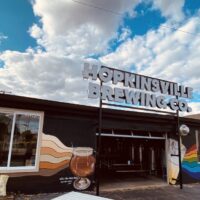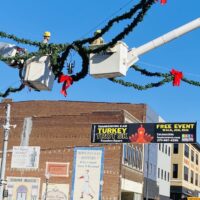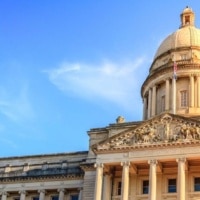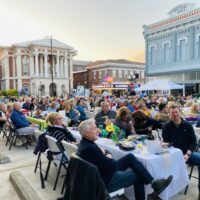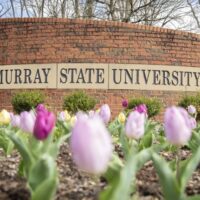When Michael Kourianos, the mayor of Price, Utah – population 8,300 – spoke with Sen. Mitt Romney about his community and its downtown, Kourianos recalls Romney giving him one piece of advice:
“He said, ‘Mayor, the one thing that reflects on a community is empty buildings on Main Street,’” Kourianos recalled, adding: “That has always been a focus of mine – how do we change that mindset?”
So that is what Kourianos is working toward with the help of community members, businesses, and a host of agencies and organizations based in the state.
Price, along with Brigham City – population 19,100, was selected as a pilot project for the Utah Main Street Program, a part of Main Street America. Main Street America is a program of the National Main Street Center, which seeks to revitalize older and historic commercial districts in an effort to create more vibrant communities and stronger economies.
In February, the Utah Legislature passed a bill establishing a statewide Main Street Program, allocating more than $350,000 for funding.

Up to that point, Utah had been one of a handful of states without a Main Street Program, though the state had one up until the 2000s. According to the Utah Governor’s Office of Economic Development, a 2019 study showed that 70% of respondents were interested in such a program. A total of 71 Utah cities, including 39 rural towns, expressed interest.
“We’ve conducted a very straightforward program utilizing the four-point approach (set by Main Street America), which is design, organization, economic vitality and promotion,” said Nan Anderson, outreach manager at the Office of Rural Development at the Governor’s Office of Economic Development. “We’ll be winding down the pilot program and concurrently gearing up the statewide effort.”
According to data provided by Main Street America about its community programs, in 2020, $4.14 billion was reinvested into communities and nearly 9,000 buildings rehabilitated. There was a nearly 15,000 net gain of jobs and more than 4,300 net gain of businesses.
In Utah, the statewide program will have a tiered system to create a varied approach to each community’s interests, Anderson said.
The pilot project has brought awareness to the need to dedicate and focus on downtown revitalization, Anderson said.
“One of the foundational aspects of this program is its historic preservation-based economic development,” she said, later adding: “Downtown revitalization efforts are vital to a community’s future. I believe that especially for our small communities, we need to take advantage of our local assets and resources, and in many cases in our communities, that includes historic downtown buildings.”
She said downtown revitalization not only affects residents but also helps draw in tourists, who more often want place-based authentic downtown areas to visit.
She said the program and its many partners help each other to break out of their silos.
“This is not traditional economic development in the strictest sense of the definition,” she said. “It isn’t just tourism. It isn’t just historic preservation. It isn’t just community development. It’s all of those things.”
“Everyone benefits from a revitalization effort,” she added. “The citizens certainly do. Businesses do for the increased traffic. City and county government do – hopefully – from increased sales tax and revenue. The state does. And an amenity for citizens is an amenity for tourists as well.”
In Price, the pilot project has helped with beautification of the downtown area, including updating planter boxes and redoing park benches to make the area more friendly to pedestrians.
“How do you make it pedestrian-friendly? You make it more inviting,” Kourianos said. “With that being said, we basically are looking at that. We’re trying to get the low-hanging fruit. What’s the low-hanging fruit? The benches, the garbage cans, the planter boxes.”
He said officials are also considering changing the speed limit from 35 miles per hour in the area to 20 miles per hour to make it more friendly to pedestrians.
They are also looking at improving sidewalks and lighting in the area. There are also facade grants available for businesses to improve the outside of their business.
“We’re getting these different grants and doing little bits and pieces,” he said. “We are taking one bit of the elephant at a time.”
Keeping Main Street alive and downtown vibrant and exciting is the main goal, he said.
“As Walmart came into Price, the downtown mom-and-pop stores slowly disappeared and I never thought that would ever happen, but it did. So how do we rejuvenate Main Street?” he said. “Now we have Amazon who is coming right to your doorstep. You don’t even have to get into your car. It’s finding other ways through this Main Street Pilot Project to make our Main Street unique and different and also attracting businesses or entrepreneurs to put a business in an empty building.”
Paul Larson is the community and economic development director for Brigham City, Utah. He said the community has been working to revitalize its downtown through various efforts dating back decades.
“Brigham City has had a fairly long history of working on revitalization for downtown,” Larson said. “We’ve done various studies, various projects to try and accomplish that over the years, with some success and not as successful.”
Larson has been aware of the national Main Street Program for a while, he said, and became interested in their training programs and webinars for professionals, merchants and volunteers.
“Downtown revitalization is a part of a quality of life factor in Brigham City and, really, in all communities,” Larson said.
An attractive, walkable, fun downtown can create an impact and drive people to stay in the community, he added.
Park City and Ogden are good examples of what a vibrant and unique downtown area can do for a community. “Those places are very well known,” he said. “Main Street in Park City is world famous. Ogden really wouldn’t feel like Ogden without 25th Street, and Brigham City wouldn’t feel like Brigham City without our Main Street. They serve to set communities apart because they are generally unique and have their own attributes and flavor, but they have a common feature that they are desirable places to be.”
Larson believes the Main Street Program is renewing a focus on an aspect of community building that may have been lost for a period but is returning.
“One hundred years ago these downtown areas were really vital and vibrant and that changed for a period of time,” he said. “But I think we’re coming back to the recognition that downtown is really the heart of a community and needs attention and needs help just like any other community function.”
This article was supported in part by the Solutions Journalism Network. It is part of a series on Utah rural development programs.


